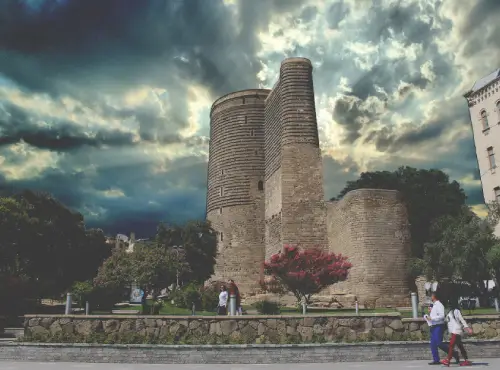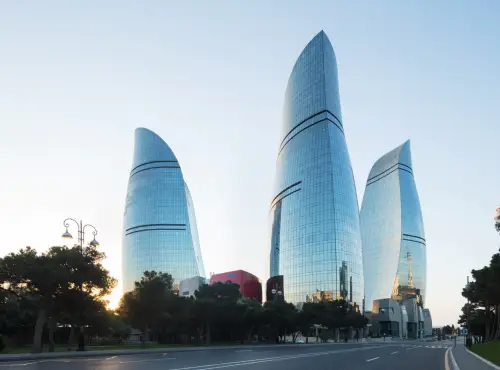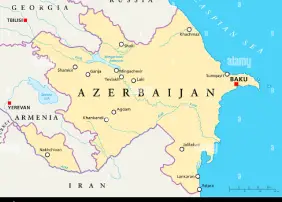History
Ancient heritage and modern transformation.
History of Baku’s Early Age. Baku, the capital of Azerbaijan, boasts a rich history that dates back to ancient times. Evidence of human settlements in the region dates back to the Stone Age, and by the 1st century AD, Baku was a flourishing trade hub due to its strategic location on the Caspian Sea.
Throughout the centuries, Baku has been influenced by various empires, including the Persian, Ottoman, and Russian empires. The city’s medieval core, the Old City (Icherisheher), is a UNESCO World Heritage site and home to historical landmarks like the Maiden Tower and the Shirvanshah’s Palace. In the 19th century, the discovery of oil transformed Baku into a major industrial centre. Today, Baku is known for its blend of ancient architecture and modern skyscrapers, reflecting its dynamic history and rapid development.

Geography


Geography
Urban elegance and coastal beauty.
Baku is located on the southern shore of the Absheron Peninsula, along the coast of the Caspian Sea. It covers an area of approximately 2,130 square kilometres and is the largest city in the Caucasus region. Baku’s landscape is characterized by its semi-arid climate, with hot summers and mild winters, and a mix of natural and urban environments.
The city’s coastline features Baku Boulevard, a promenade that stretches along the Caspian Sea, offering stunning views and recreational spaces. Baku is also known for its diverse architecture, from the medieval walls of the Old City to the futuristic Flame Towers and the iconic Heydar Aliyev Center, designed by Zaha Hadid. The city’s geographical position makes it a crossroads of cultures and a gateway between Europe and Asia, enhancing its unique charm.
